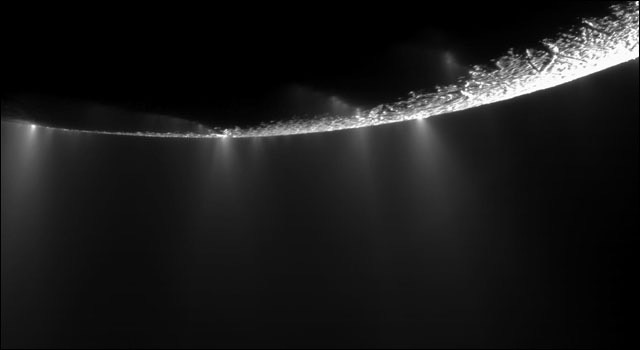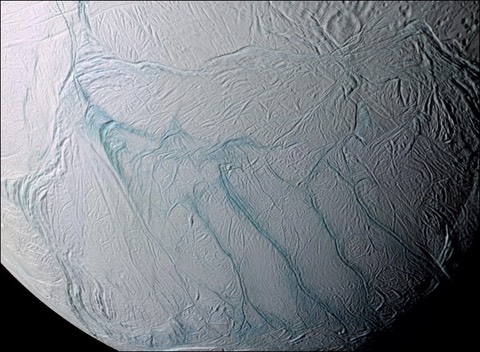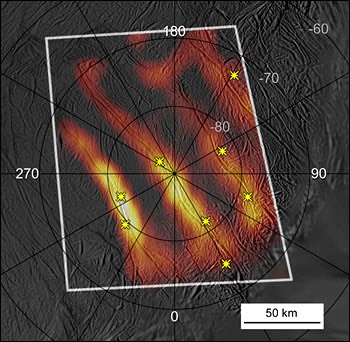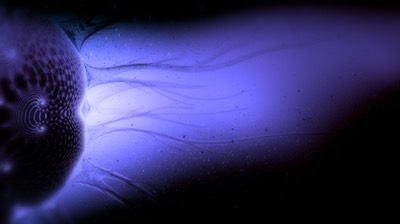NASA's Cassini probe has returned some stunning pictures that show water vapour crystallizing into ice particles as it is ejected under pressure from what is believed to be a 'salty' ocean under the surface of Saturn's small moon Enceladus.

Like Europa, Enceladus is pushed and pulled by the gravity of its planet and it is likely that this tidal flexion is what provides enough heat to maintain liquid water under its icy outer layers. NASA scientists say that the the salt-rich ice particles ejected near the surface have an 'ocean-like' composition, rich in potassium and sodium.
The ice crystal jets come from an area on Enceladus called 'The Tiger Stripes', large rifts over a hundred kilometers long tinged with unusual bluish streaks. What's great here is that the science has determined that the water cannot be simply frozen particles ejected from the surface ice itself - it must come from below it.


"There currently is no plausible way to produce a steady outflow of salt-rich grains from solid ice across all the tiger stripes other than salt water under Enceladus's icy surface," said Frank Postberg, a Cassini team scientist.
Heat maps of this area show that these rifts are much warmer than the areas that surround them (although it has to be said that the use of the word 'warm' here is relative - the bright areas on the image above right are around -135F, but compared to the -330F of the surface next to them, that's positively balmy!)
The implication of all this is that the ice crust on Enceladus is remarkably thin. In 2008 Cassini sent back data indicating that these fissures on Enceladus are also streaming out a brew of organic chemicals not unlike those found inside comets.
If there is a salty ocean stirred up with organic chemicals on Enceladus, it is certainly a place we would look for evidence of life.



